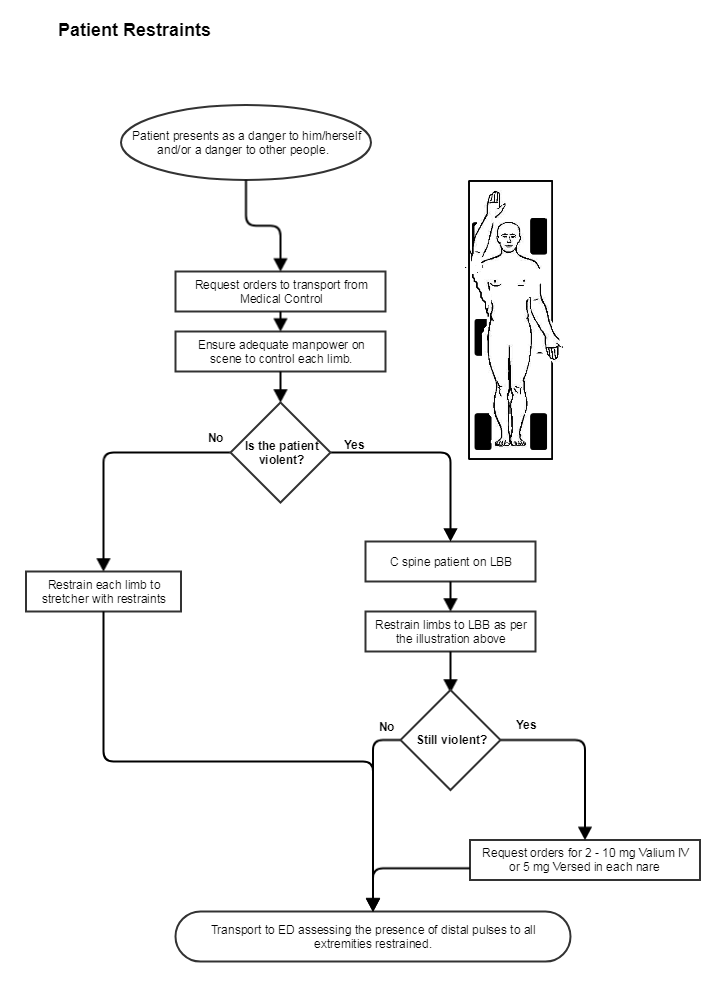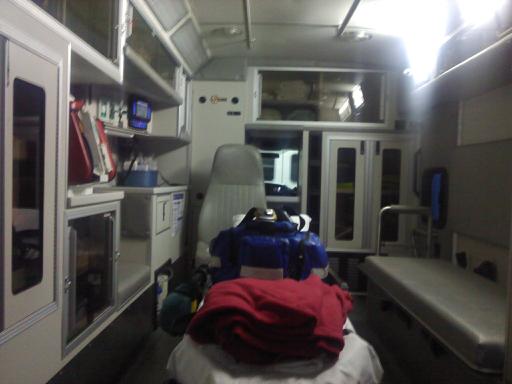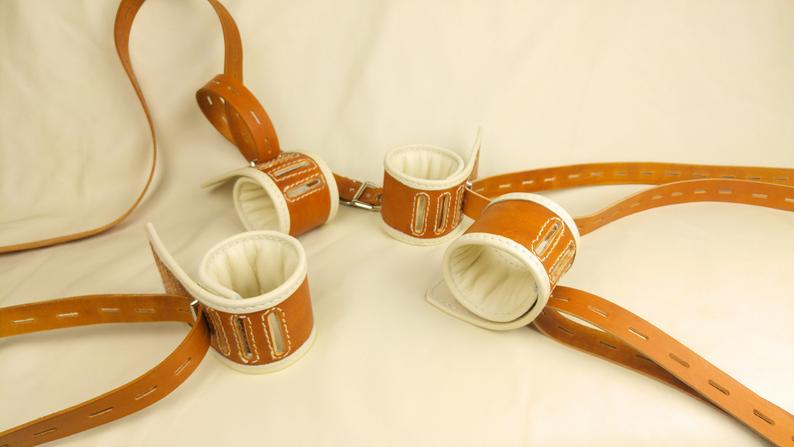Restraining Patients
Published (updated: ).

Violent patients should never be transported without restraints. Unless the ambulance crew doubles as a hostage negotiator or used car salesman, the patient will either not cooperate or even worse, fail to cooperate at a later time. The worst possible place to have a physical confrontation is in the back of an ambulance.
Use of force must always be preceded by orders from medical control. If medical control does not agree with the use of force, the EMS crew is free to resolve the call with whatever administrative procedure they would use to resolve a non-transport situation. Valid reasons are generally the patient has made a suicidal attempt or is attempting to kill other people (danger to self or others). EMS should understand that a call that requires restraining the patient is not necessarily going to result in a ‘thank you’ from the public. When considering the merits of restraining a patient, the EMS crew should be considering what would happen if EMS left the patient on scene, what would happen next. It’s not going to be a popular decision, but who said doing the right thing was always easy?

Ambulance patients will require restraint in a number of situations, however all the situations will come down to a couple of simple facts:
- The patient is a danger to self or other patients
- The patient does is refusing transport
All cases where restraints are considered or used require guidance from medical control.
All cases where restraints are considered or used require guidance from medical control.
All cases where restraints are considered or used require guidance from medical control.
After consulting with medical control and obtaining orders to restrain, it’s time to come up with a plan and execute with efficiency. First ensure enough manpower are on scene and assign them a limb to control. An ambulance crew needs 4 people to control a violent patient, one for each limb. Assign each crew member a limb. Approach the patient from the left and right side simultaneously. Be definitive. Each rescuer controls the assigned limb. Secure the patient as per the illustration above to a long back board with medical restraints (not handcuffs).
After the patient has been secured to the backboard, the EMS crew should check and document distal circulation every 5 minutes. Airway, breathing, and circulation should be assessed every 5 minutes as well. If the patient spits on the EMS crew, a non rebreather mask with oxygen should be be placed on the patient.

Restraining a patient should always be preceded by consultation and orders by medical control. After the patient has been delivered to the hospital, a signature from the physician who made the order should be obtained.
